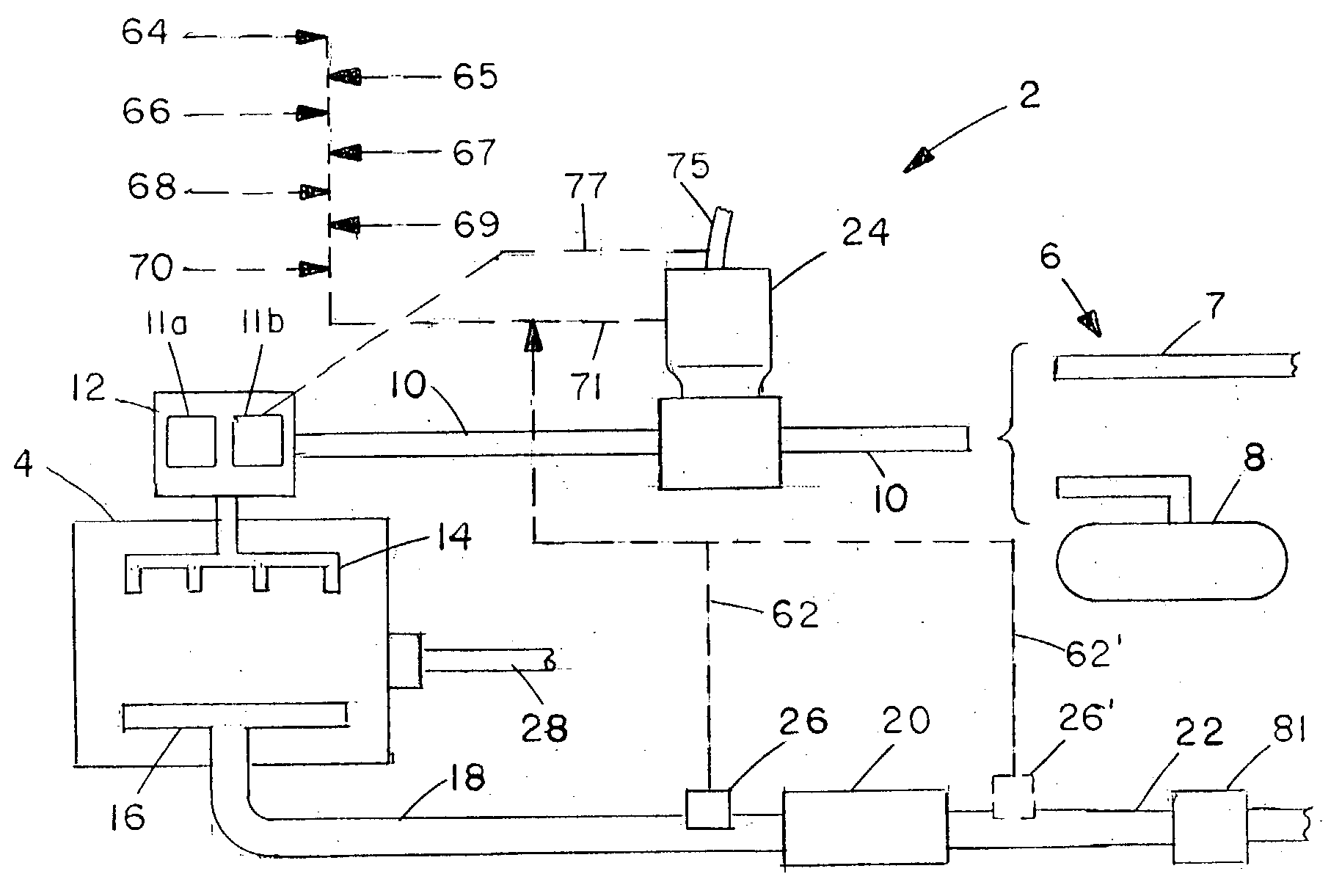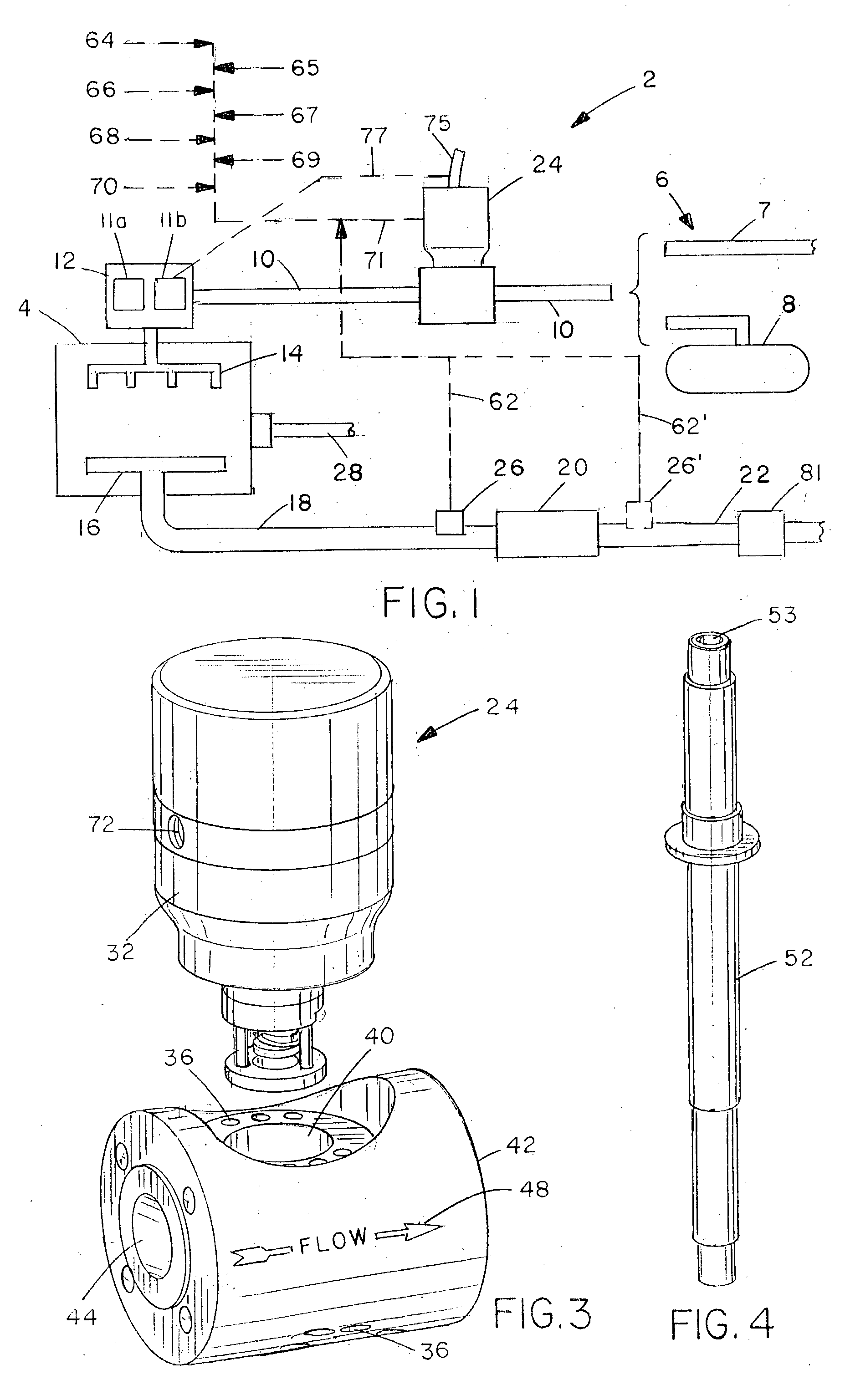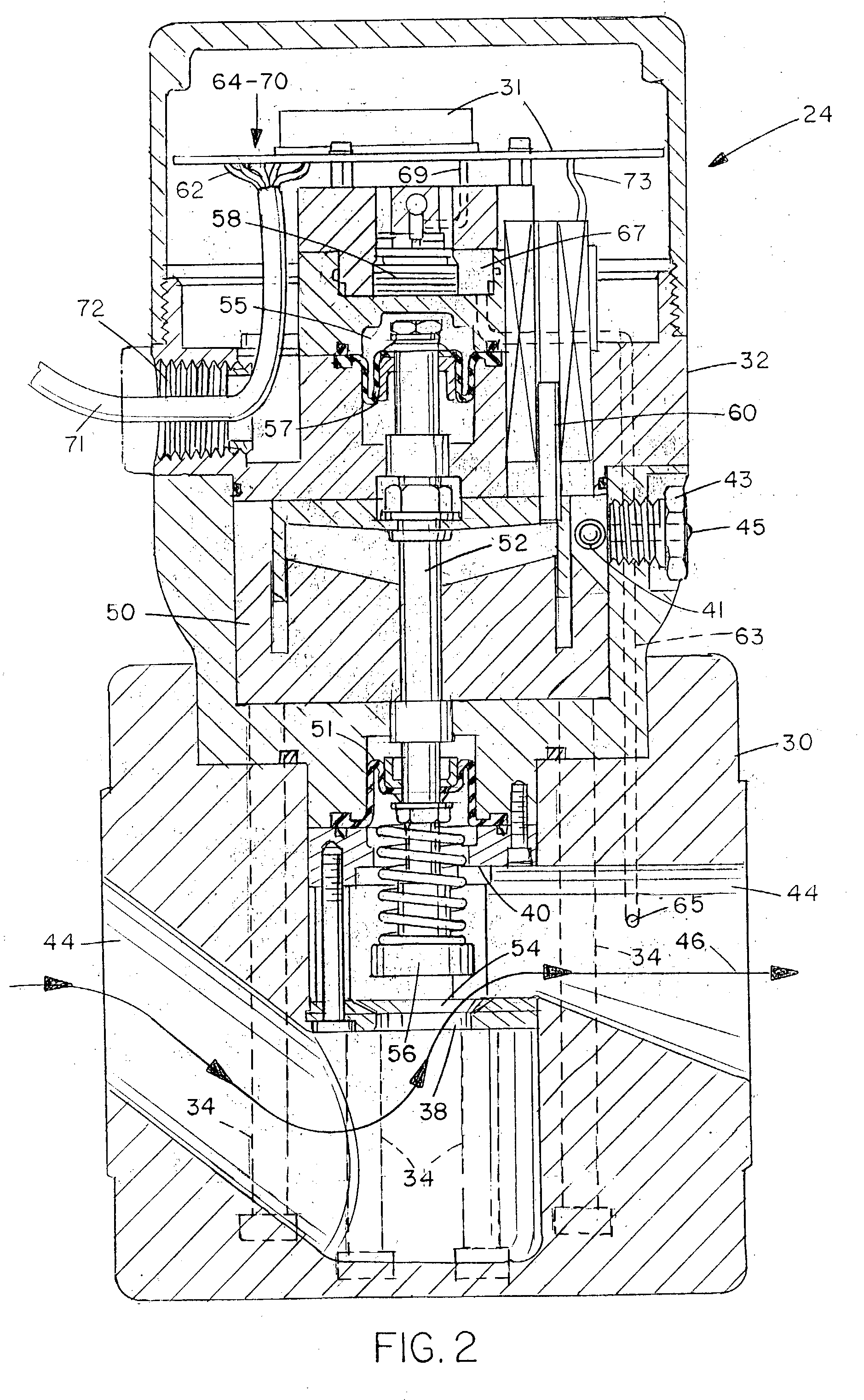Emission control valve for gas-fueled engines
a technology of emission control valves and gas-fueled engines, which is applied in the direction of valve operating means/release devices, electric control, machines/engines, etc., can solve the problems of system and others like it being susceptible to performance deficiencies, not being particularly easy, convenient or economical to install, operate or use, and slow respons
- Summary
- Abstract
- Description
- Claims
- Application Information
AI Technical Summary
Problems solved by technology
Method used
Image
Examples
Embodiment Construction
[0023] The invention herein can be best understood by reference to the drawings. FIG. 1 illustrates schematically a gas-fueled engine system 2 in which the emission control valve of the present invention is incorporated. The gaseous fuel used in the engine may be any gaseous fuel including gaseous hydrocarbons and hydrogen, but will commonly be municipal natural gas, landfill gas, butane or propane; such engines typically run on a stoichiometric, air / fuel mixture, but can be used with clean-burn engines (large amount of excess air). The invention is not applicable to liquid fuel engine systems. In the system 2 there is an internal combustion engine 4. The fuel which is obtained from a gas fuel supply source 6 which may be a municipal natural gas supply system or landfill gas 7, a propane or butane supply tank 8, or any other convenient source of gaseous fuel. The gaseous fuel for the engine 4 moves under pressure through fuel supply conduit 10 to the air / fuel mixing system 12, which...
PUM
 Login to View More
Login to View More Abstract
Description
Claims
Application Information
 Login to View More
Login to View More - R&D
- Intellectual Property
- Life Sciences
- Materials
- Tech Scout
- Unparalleled Data Quality
- Higher Quality Content
- 60% Fewer Hallucinations
Browse by: Latest US Patents, China's latest patents, Technical Efficacy Thesaurus, Application Domain, Technology Topic, Popular Technical Reports.
© 2025 PatSnap. All rights reserved.Legal|Privacy policy|Modern Slavery Act Transparency Statement|Sitemap|About US| Contact US: help@patsnap.com



